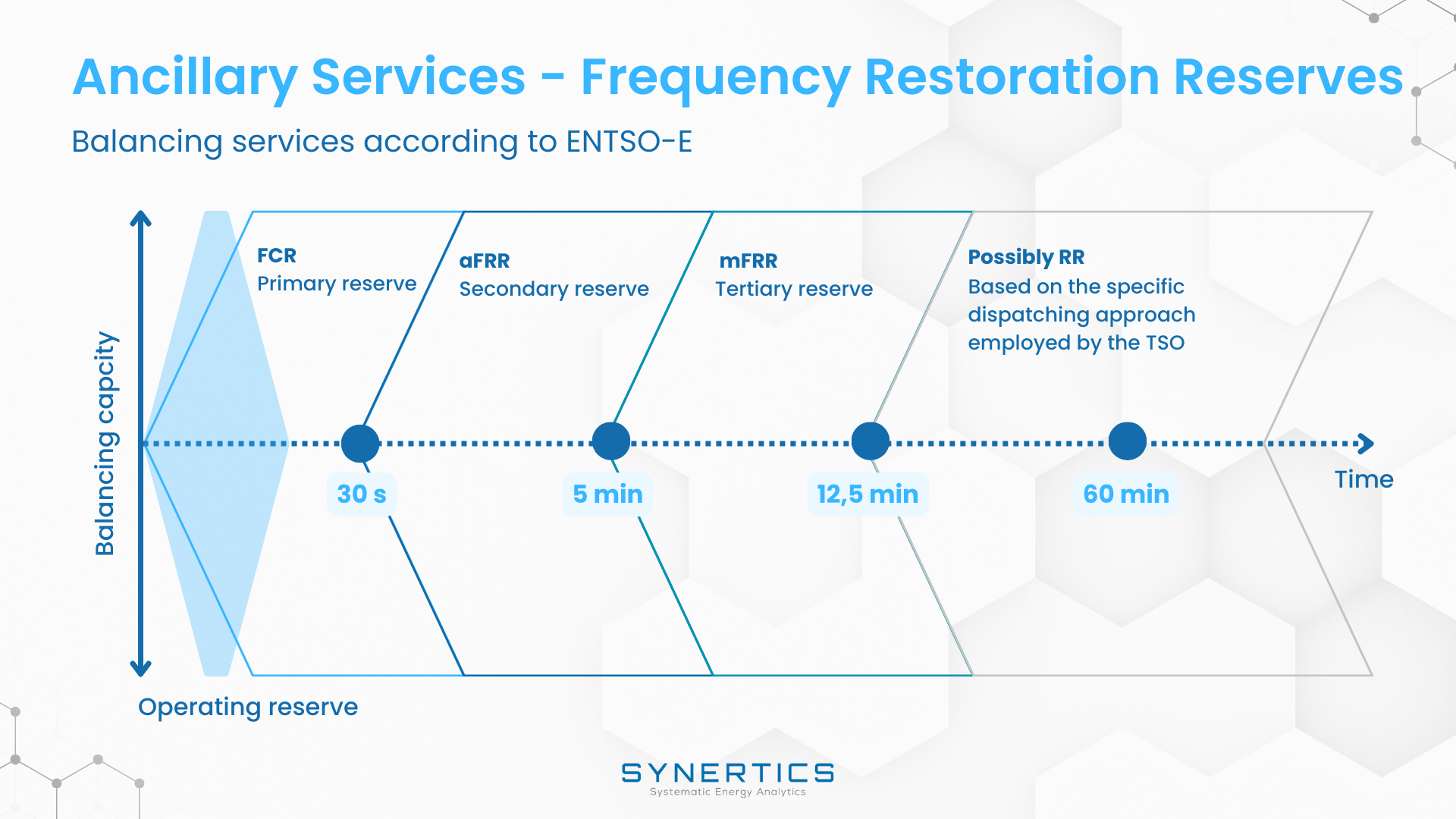Join us on our journey towards renewable energy excellence, where knowledge meets innovation.
Reserve power is a critical component of a reliable electrical grid system, and it is categorized into primary reserve, secondary reserve, and tertiary reserve based on their activation times and the duration of activation. These frequency restoration reserves ensure that the grid can respond to sudden changes in supply and demand, maintaining a stable and reliable supply of electricity.

Frequency Containment Reserve (FCR), Automatic Frequency Restoration Reserve (aFRR) and Manual Frequency Restoration Reserve (mFRR) and Restoration Reserves (RR) are specific categories of reserve power that play a vital role in maintaining grid stability, especially in response to sudden changes in frequency.
In order to maintain the frequency within specific limits, Transmission System Operators (TSOs) implement balancing services which they obtain from providers known as Balancing Service Providers (BSPs). While the requirements may vary from one country to another, following the harmonization of balancing markets in Europe, BSPs are now obligated to ensure they deliver the reserve service within a 5-minute time frame (referred to as Full Activation Time). After an initial 30-second period, aFRR takes over as the secondary reserve, while the tertiary reserve, known as mFRR, provides support or partially takes over from aFRR after approximately 12.5 minutes. Here's how they relate to the broader concept of reserve power:
As the primary reserve, the FCR seeks to maintain equilibrium between power generation and consumption within the Synchronous Area, with the objective of ensuring the operational reliability of the Synchronous Area's power system and stabilizing the system frequency at a constant value
Serving as the secondary frequency control mechanism, aFRR is responsible for fine-tuning the active power output to rectify frequency deviations and bring interchanges with other systems back to their designated levels following an imbalance, ultimately returning the frequency to its target value.
In its role as the tertiary frequency control, mFRR's responsibilities encompass reinstating the primary and secondary frequency control reserves, managing congestion within the transmission network, and restoring both frequency and interchanges to their specified target values.
RR is tasked with replenishing or reinforcing the necessary level of frequency restoration reserves and addressing system imbalances, including maintaining generation reserves through active power reserves. Restoration Reserves are vital for ensuring the rapid recovery of grid operations and minimizing the impact of large-scale outages on communities, industries, and essential services. These reserves require careful planning, coordination, and resources to address the unique challenges posed by the restoration phase of grid operation.

These reserve categories are crucial for maintaining the stability and reliability of the electrical grid. Transmission system operators carefully manage and coordinate the activation of these reserves to ensure that they can quickly respond to disturbances and maintain the balance between supply and demand. This helps prevent blackouts, voltage fluctuations, and other disruptions in the power supply, ultimately ensuring a continuous and reliable source of electricity for consumers.
Synertics provides advisory services and develops digital data-driven solutions for the energy industry with the purpose of driving productivity and transferring knowledge.

Insights, Market-trends
15th Dec, 2025

Insights
2nd Dec, 2025

Insights
19th Nov, 2025